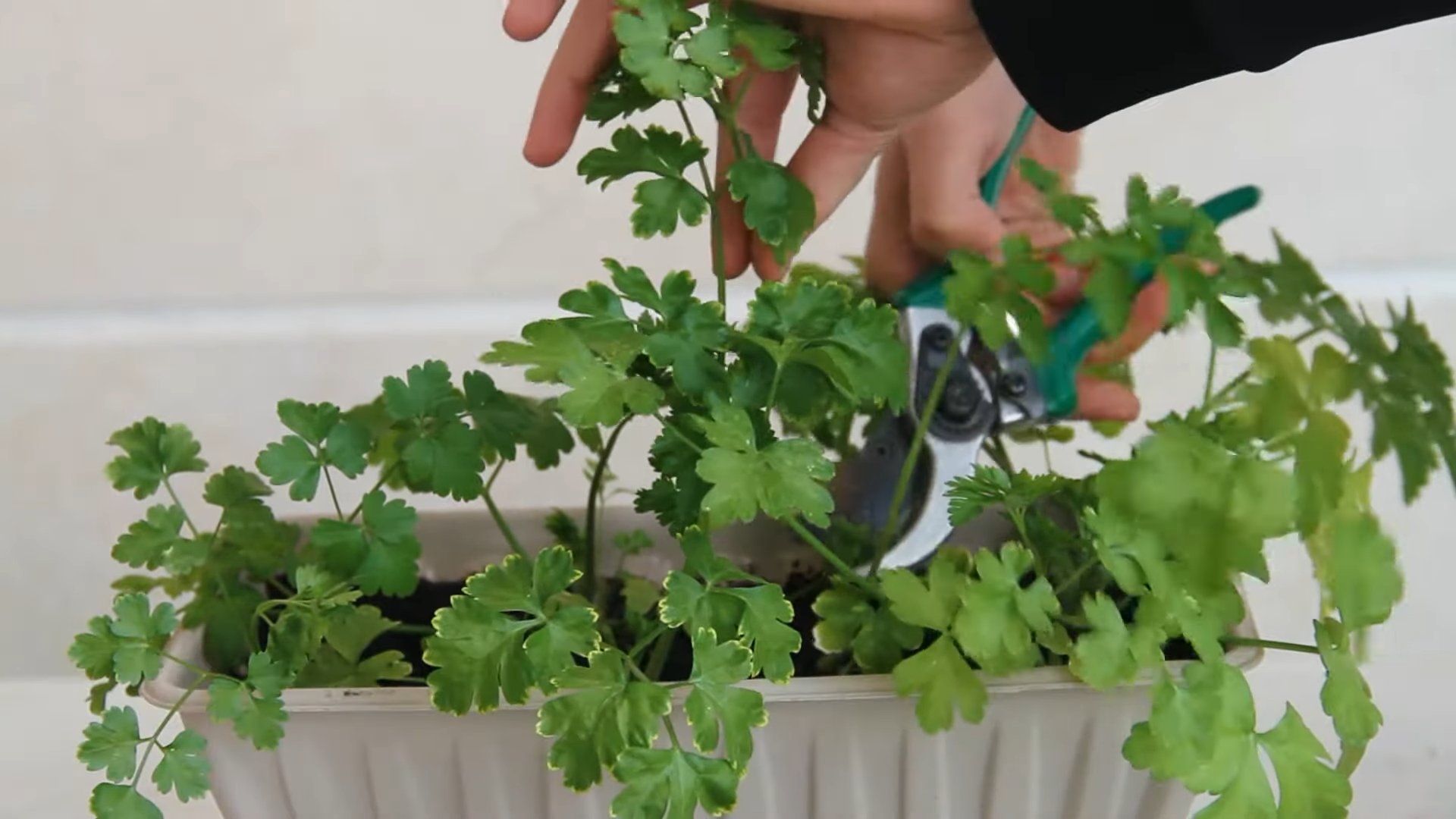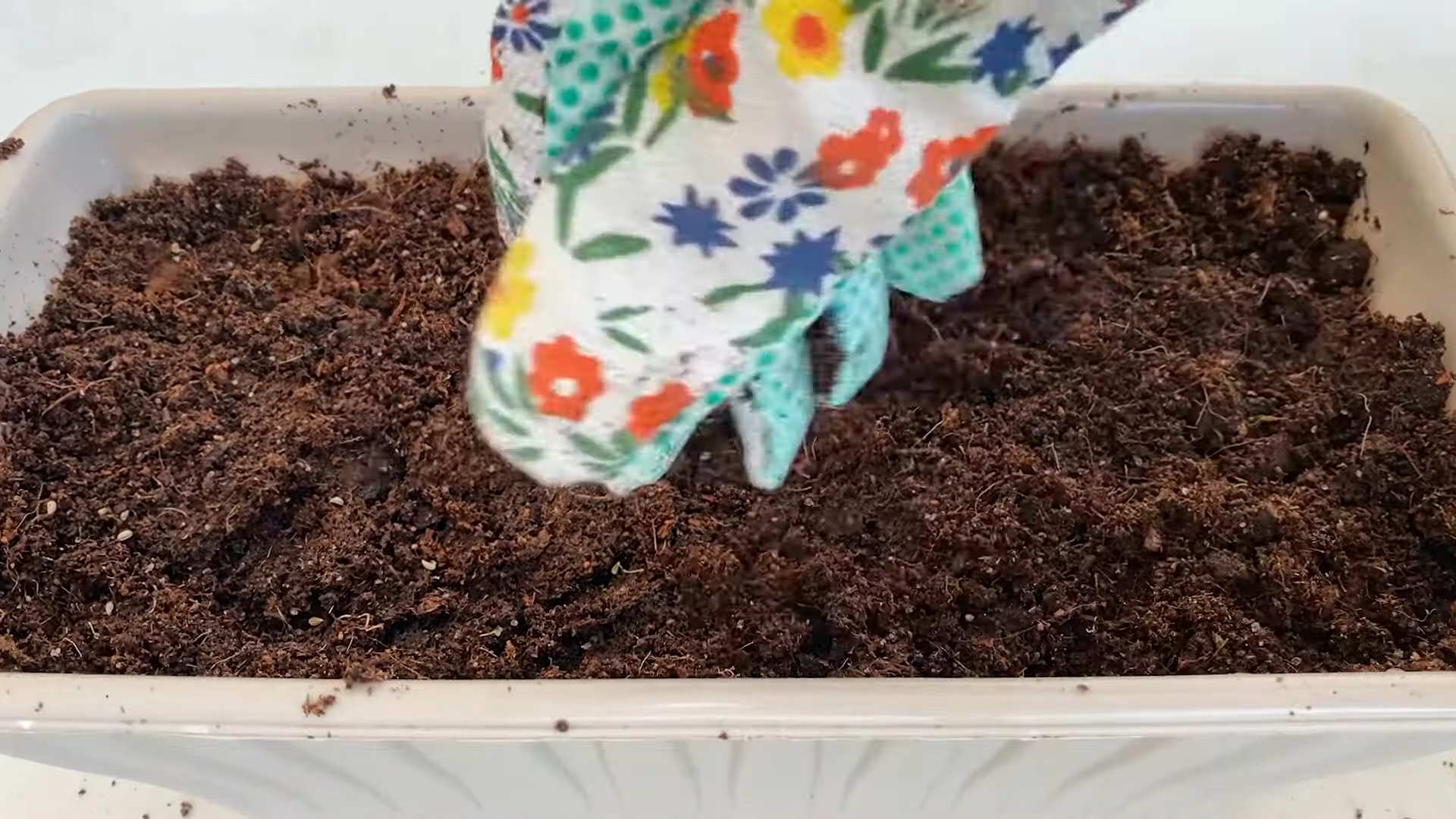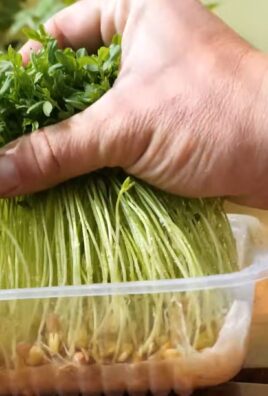Growing Parsley at Home doesn’t have to be a daunting task! Imagine stepping outside your kitchen and snipping fresh, vibrant parsley to garnish your pasta, brighten your salad, or add a burst of flavor to your homemade sauces. Sounds idyllic, right? Well, it’s absolutely achievable, even if you don’t have a sprawling garden. For centuries, parsley has been more than just a pretty garnish; it’s been a symbol of spring, a medicinal herb, and a culinary staple across cultures. From ancient Greece, where it adorned victors, to modern kitchens worldwide, parsley’s versatility is undeniable.
But let’s be honest, buying fresh parsley from the store can be a gamble. Sometimes it’s wilted, sometimes it’s expensive, and sometimes it just doesn’t have that intense, fresh flavor you crave. That’s where the magic of DIY comes in! I’m here to share some simple, effective tricks and hacks that will empower you to successfully start growing parsley at home, regardless of your gardening experience. We’ll cover everything from choosing the right container and soil to mastering the art of watering and harvesting. Get ready to unlock the secrets to a thriving parsley patch, right at your fingertips!

Growing Parsley at Home: A DIY Guide
Okay, so you want to grow your own parsley? Awesome! Fresh parsley is a game-changer in the kitchen, and it’s surprisingly easy to cultivate right at home. I’m going to walk you through everything you need to know, from choosing the right variety to harvesting your bounty. Let’s get started!
Choosing Your Parsley Variety
First things first, you need to decide what kind of parsley you want. There are two main types: curly parsley and flat-leaf (Italian) parsley.
* Curly Parsley: This is the kind you often see as a garnish. It has a slightly milder flavor than flat-leaf.
* Flat-Leaf (Italian) Parsley: This is my personal favorite. It has a more robust, peppery flavor that I think really elevates dishes.
You can also find other varieties, like Hamburg parsley, which is grown for its root. But for culinary purposes, stick with curly or flat-leaf.
Getting Started: Seeds vs. Seedlings
You have two options here: starting from seeds or buying seedlings.
* Seeds: Starting from seeds is more economical, but it takes longer. Parsley seeds are notoriously slow to germinate.
* Seedlings: Buying seedlings gives you a head start. You’ll have parsley ready to harvest much sooner.
I’ve done both, and honestly, if you’re impatient like me, seedlings are the way to go. But if you’re on a budget and enjoy the process of nurturing plants from the very beginning, seeds are a great option.
Materials You’ll Need
Before we dive into the planting process, let’s gather our supplies. Here’s what you’ll need:
* Parsley seeds or seedlings: Choose your variety and source them from a reputable garden center.
* Potting mix: Use a high-quality potting mix that drains well. Avoid using garden soil, as it can compact and hinder growth.
* Pots or containers: Choose pots that are at least 6 inches deep and wide. Parsley needs room for its roots to grow. Make sure they have drainage holes!
* Watering can or hose: For watering your parsley.
* Fertilizer (optional): A balanced liquid fertilizer can help boost growth.
* Sunny location: Parsley needs at least 6 hours of sunlight per day.
* Gardening gloves (optional): To keep your hands clean.
Planting Your Parsley: Step-by-Step Guide
Okay, let’s get our hands dirty! Here’s how to plant your parsley, whether you’re starting from seeds or seedlings.
Planting from Seeds
1. Prepare your pots: Fill your pots with potting mix, leaving about an inch of space at the top.
2. Sow the seeds: Sprinkle the parsley seeds evenly over the surface of the soil. Don’t overcrowd them.
3. Cover the seeds: Lightly cover the seeds with a thin layer of potting mix (about 1/4 inch).
4. Water gently: Water the soil gently to moisten it. Avoid overwatering, which can cause the seeds to rot.
5. Keep the soil moist: Keep the soil consistently moist but not soggy. You can cover the pots with plastic wrap to help retain moisture.
6. Provide warmth: Parsley seeds germinate best in warm temperatures (around 70-75°F). Place the pots in a warm, sunny location.
7. Be patient: Parsley seeds can take up to 3-4 weeks to germinate. Don’t give up!
8. Thin the seedlings: Once the seedlings emerge and have a few true leaves, thin them out so that they are spaced about 2-3 inches apart.
Planting Seedlings
1. Prepare your pots: Fill your pots with potting mix, leaving about an inch of space at the top.
2. Dig a hole: Dig a hole in the center of the pot that is large enough to accommodate the seedling’s root ball.
3. Remove the seedling: Gently remove the seedling from its container. Be careful not to damage the roots.
4. Place the seedling: Place the seedling in the hole and gently spread out the roots.
5. Fill the hole: Fill the hole with potting mix, gently patting it down around the seedling.
6. Water thoroughly: Water the seedling thoroughly to help it settle in.
7. Provide sunlight: Place the pot in a sunny location that receives at least 6 hours of sunlight per day.
Caring for Your Parsley
Now that your parsley is planted, it’s time to take care of it. Here’s what you need to do to keep your parsley healthy and thriving.
* Watering: Parsley needs consistent moisture, but it doesn’t like to be waterlogged. Water when the top inch of soil feels dry to the touch. Avoid overhead watering, which can lead to fungal diseases.
* Sunlight: Parsley needs at least 6 hours of sunlight per day. If you don’t have a sunny spot, you can supplement with a grow light.
* Fertilizing: Parsley is a light feeder, but it can benefit from occasional fertilization. Use a balanced liquid fertilizer diluted to half strength every 2-3 weeks.
* Pruning: Regular pruning encourages bushier growth. Pinch off the tips of the stems to promote branching.
* Pest control: Parsley is generally pest-resistant, but it can be susceptible to aphids and spider mites. Inspect your plants regularly and treat any infestations promptly with insecticidal soap or neem oil.
* Bolting: Parsley is a biennial plant, which means it will flower and set seed in its second year. Once it bolts (sends up a flower stalk), the leaves will become bitter. To prevent bolting, pinch off any flower stalks as soon as you see them.
Harvesting Your Parsley
The best part! You can start harvesting parsley once the stems have at least three segments.
1. Choose your stems: Select the outer stems, leaving the inner stems to continue growing.
2. Cut the stems: Use scissors or pruning shears to cut the stems near the base of the plant.
3. Harvest regularly: Regular harvesting encourages continued growth. Don’t be afraid to cut back your parsley – it will grow back stronger!
4. Wash and store: Wash the parsley thoroughly and pat it dry. You can store it in the refrigerator in a plastic bag or wrapped in a damp paper towel. Freshly harvested parsley will last for about a week in the refrigerator.
Troubleshooting
Even with the best care, you might encounter some problems along the way. Here are some common issues and how to fix them:
* Yellowing leaves: This can be caused by overwatering, underwatering, or nutrient deficiencies. Adjust your watering schedule and fertilize your parsley if necessary.
* Leggy growth: This is usually caused by insufficient sunlight. Move your parsley to a sunnier location or supplement with a grow light.
* Slow growth: This can be caused by cold temperatures or poor soil. Make sure your parsley is in a warm location and that the soil is well-draining.
* Pests: Inspect your plants regularly and treat any infestations promptly with insecticidal soap or neem oil.
Extending the Harvest
Parsley is a biennial, but in colder climates, it’s often grown as an annual because it doesn’t always survive the winter. Here are some tips for extending your parsley harvest:
* Succession planting: Plant new parsley seeds or seedlings every few weeks to ensure a continuous supply.
* Overwintering: In mild climates, you can overwinter parsley by protecting it from frost. Cover the plants with a layer of mulch or move them to a sheltered location.
* Bringing indoors: Before the first frost, you can dig up your parsley plants and pot them up to bring indoors for the winter. Place them in a sunny location and water regularly.
Enjoying Your Homegrown Parsley
Now that you have a bountiful supply of fresh parsley, it’s time to put it to use! Here are some ideas:
* Garnish: Use parsley as a garnish for soups, salads, and main dishes.
* Flavoring: Add parsley to sauces, dressings, and marinades.
* Pesto: Make parsley pesto for pasta or sandwiches.
* Salads: Add chopped parsley to salads for a fresh, herbaceous flavor.
* Smoothies: Add a handful of parsley to your smoothies for a nutritional boost.
* Drying: Dry your parsley for later use. Hang the stems upside down in a cool, dry place until they are completely dry. Then, crumble the leaves and

Conclusion
So, there you have it! Growing parsley at home isn’t just a fun gardening project; it’s a gateway to fresher, more flavorful meals and a more sustainable lifestyle. We’ve walked through the simple steps, from choosing the right variety to harvesting your bountiful crop. The benefits are undeniable: you’ll have a constant supply of vibrant, aromatic parsley right at your fingertips, ready to elevate your culinary creations. Forget those wilted, overpriced bunches from the grocery store – with a little effort, you can cultivate your own thriving parsley patch.
This DIY trick is a must-try for several reasons. First, the taste difference between homegrown parsley and store-bought is remarkable. The fresh, vibrant flavor of homegrown parsley simply can’t be matched. Second, you’ll save money in the long run. Think about how often you buy parsley, only to use a small amount and watch the rest go to waste. Growing your own eliminates that waste and provides a continuous supply. Third, it’s incredibly rewarding to nurture a plant from seed to harvest. There’s a unique satisfaction in knowing you grew something yourself, and that parsley will add a special touch to your dishes.
But the best part? You can customize your parsley garden to suit your needs and preferences. Consider growing different varieties of parsley. Flat-leaf parsley (Italian parsley) is known for its robust flavor and is ideal for cooking, while curly parsley is often used as a garnish. Why not grow both? You could also experiment with companion planting. Parsley is known to deter certain pests and attract beneficial insects, making it a great addition to your vegetable garden. Plant it alongside tomatoes, peppers, or carrots to help protect them from unwanted visitors.
Another variation to consider is growing parsley indoors. If you live in an apartment or have limited outdoor space, you can easily grow parsley in a pot on a sunny windowsill. Just make sure it gets enough sunlight and water, and you’ll be enjoying fresh parsley year-round. You can even use grow lights to supplement natural sunlight during the darker months.
We encourage you to give this DIY trick a try. It’s easier than you might think, and the rewards are well worth the effort. Start small, with just a few seeds or a small plant, and see how it goes. Once you get the hang of it, you can expand your parsley garden and experiment with different varieties and growing techniques.
Don’t be afraid to get your hands dirty and embrace the joy of growing your own food. Growing parsley at home is a simple yet powerful way to connect with nature, enhance your cooking, and live a more sustainable life.
We’d love to hear about your experiences! Share your tips, tricks, and photos of your homegrown parsley on social media using [Your Hashtag]. Let’s create a community of parsley enthusiasts and inspire others to discover the joys of growing their own herbs. Happy gardening!
Frequently Asked Questions (FAQ)
What is the best time of year to plant parsley?
Parsley can be planted in early spring or late summer/early fall. For a spring planting, start seeds indoors 6-8 weeks before the last expected frost. You can also direct sow seeds outdoors once the soil has warmed up to at least 50°F (10°C). For a fall planting, sow seeds directly into the garden about 6-8 weeks before the first expected frost. This will give the parsley plants enough time to establish themselves before winter. In warmer climates, parsley can be grown year-round.
How much sunlight does parsley need?
Parsley thrives in full sun, which means it needs at least 6 hours of direct sunlight per day. However, it can also tolerate partial shade, especially in hotter climates. If you’re growing parsley indoors, place it near a sunny window or use grow lights to provide adequate light. Insufficient sunlight can result in leggy, weak plants with less flavorful leaves.
What kind of soil is best for growing parsley?
Parsley prefers well-draining soil that is rich in organic matter. The ideal soil pH is between 6.0 and 7.0. Before planting, amend the soil with compost or other organic matter to improve drainage and fertility. You can also add a slow-release fertilizer to provide essential nutrients. If you’re growing parsley in containers, use a high-quality potting mix.
How often should I water parsley?
Parsley needs consistent moisture to thrive. Water deeply whenever the top inch of soil feels dry to the touch. Avoid overwatering, as this can lead to root rot. During hot, dry weather, you may need to water more frequently. When watering, aim for the base of the plant to avoid wetting the foliage, which can increase the risk of fungal diseases.
How do I harvest parsley?
You can start harvesting parsley leaves once the plants are about 6 inches tall. To harvest, simply snip off the outer stems near the base of the plant. Avoid cutting more than one-third of the plant at a time, as this can stunt its growth. Regular harvesting encourages the plant to produce more leaves. Parsley is best used fresh, but you can also dry or freeze it for later use.
Why is my parsley turning yellow?
Yellowing parsley leaves can be caused by several factors, including overwatering, underwatering, nutrient deficiencies, or pests and diseases. Check the soil moisture to ensure you’re not overwatering or underwatering. If the soil is consistently wet, improve drainage. If the soil is dry, water more frequently. Yellowing can also indicate a nutrient deficiency, such as nitrogen or magnesium. Amend the soil with compost or use a fertilizer to provide essential nutrients. Inspect the plants for pests or diseases and take appropriate action if necessary.
How do I prevent parsley from bolting (going to seed)?
Bolting is a natural process that occurs when parsley plants are exposed to high temperatures or long days. To prevent bolting, provide shade during the hottest part of the day, especially in summer. Water regularly to keep the soil moist. You can also pinch off any flower stalks that appear to encourage the plant to focus its energy on producing leaves. Consider planting parsley in a location that receives morning sun and afternoon shade.
Can I grow parsley indoors?
Yes, parsley can be grown indoors, especially if you live in an area with cold winters. Choose a pot that is at least 6 inches in diameter and fill it with a high-quality potting mix. Place the pot near a sunny window or use grow lights to provide adequate light. Water regularly and fertilize every few weeks. Indoor parsley may not grow as vigorously as outdoor parsley, but it will still provide you with a fresh supply of leaves.
What are some common pests and diseases that affect parsley?
Parsley can be susceptible to certain pests and diseases, including aphids, spider mites, parsley worms, and fungal diseases like leaf spot and root rot. Inspect your plants regularly for signs of pests or diseases. If you find aphids or spider mites, spray the plants with insecticidal soap or neem oil. Parsley worms can be handpicked off the plants. To prevent fungal diseases, avoid overwatering and ensure good air circulation. Remove any infected leaves to prevent the spread of disease.
Is parsley a perennial or an annual?
Parsley is technically a biennial, which means it has a two-year life cycle. In the first year, it produces leaves. In the second year, it flowers, sets seed, and then dies. However, parsley is often grown as an annual, especially in colder climates where it may not survive the winter. To ensure a continuous supply of parsley, sow new seeds every year. You can also try overwintering parsley plants by protecting them from frost with a layer of mulch or by bringing them indoors.




Leave a Comment